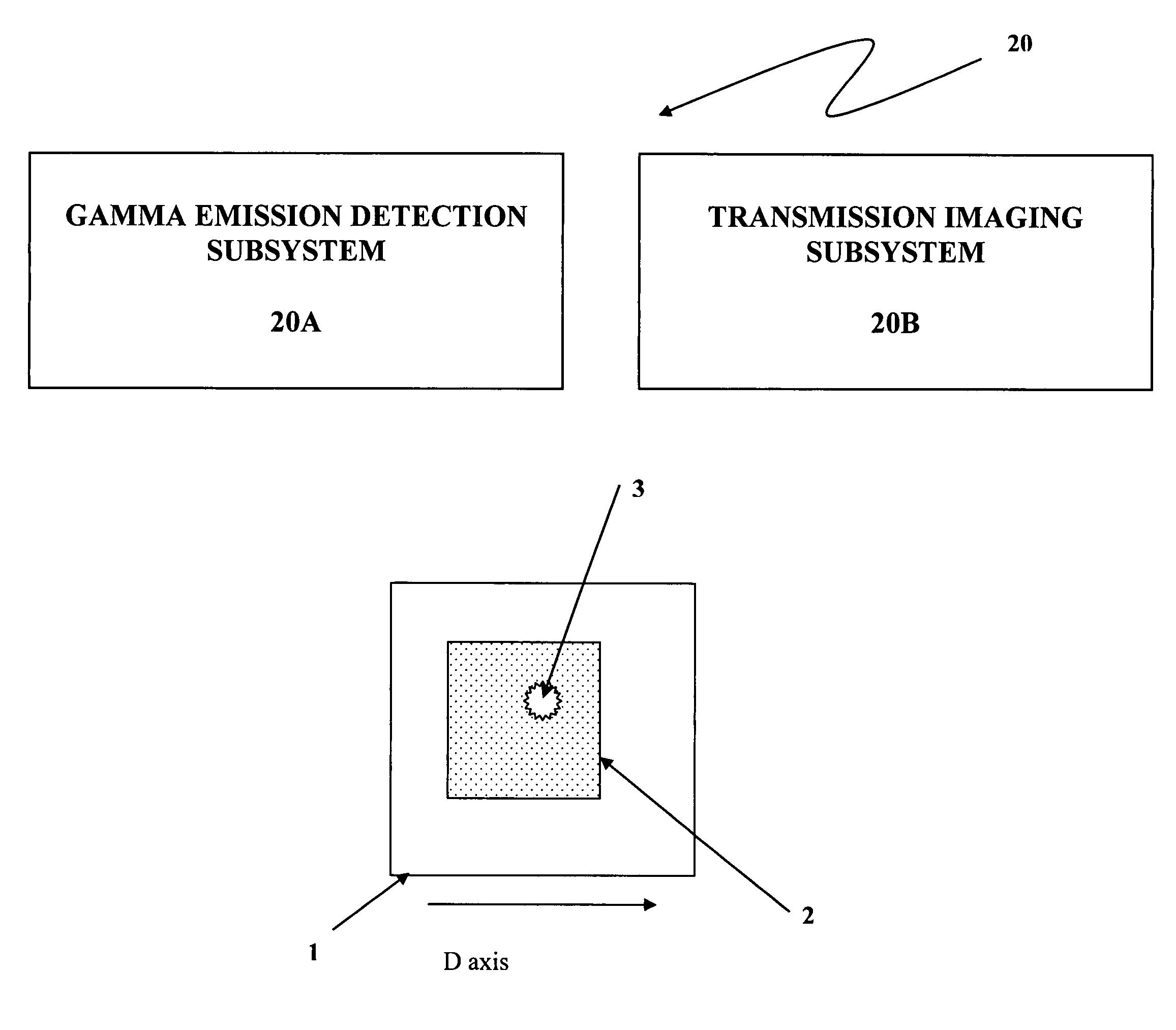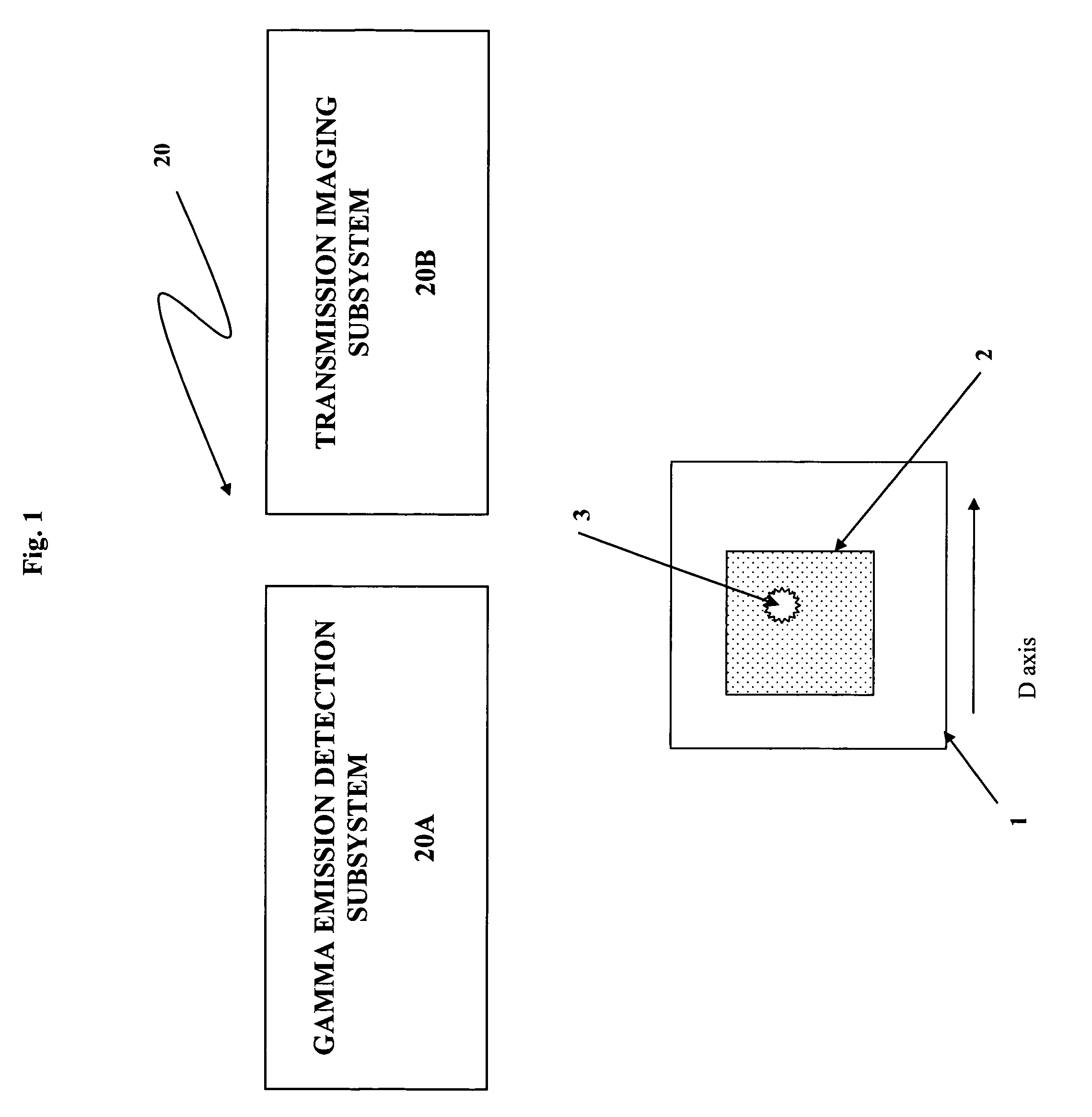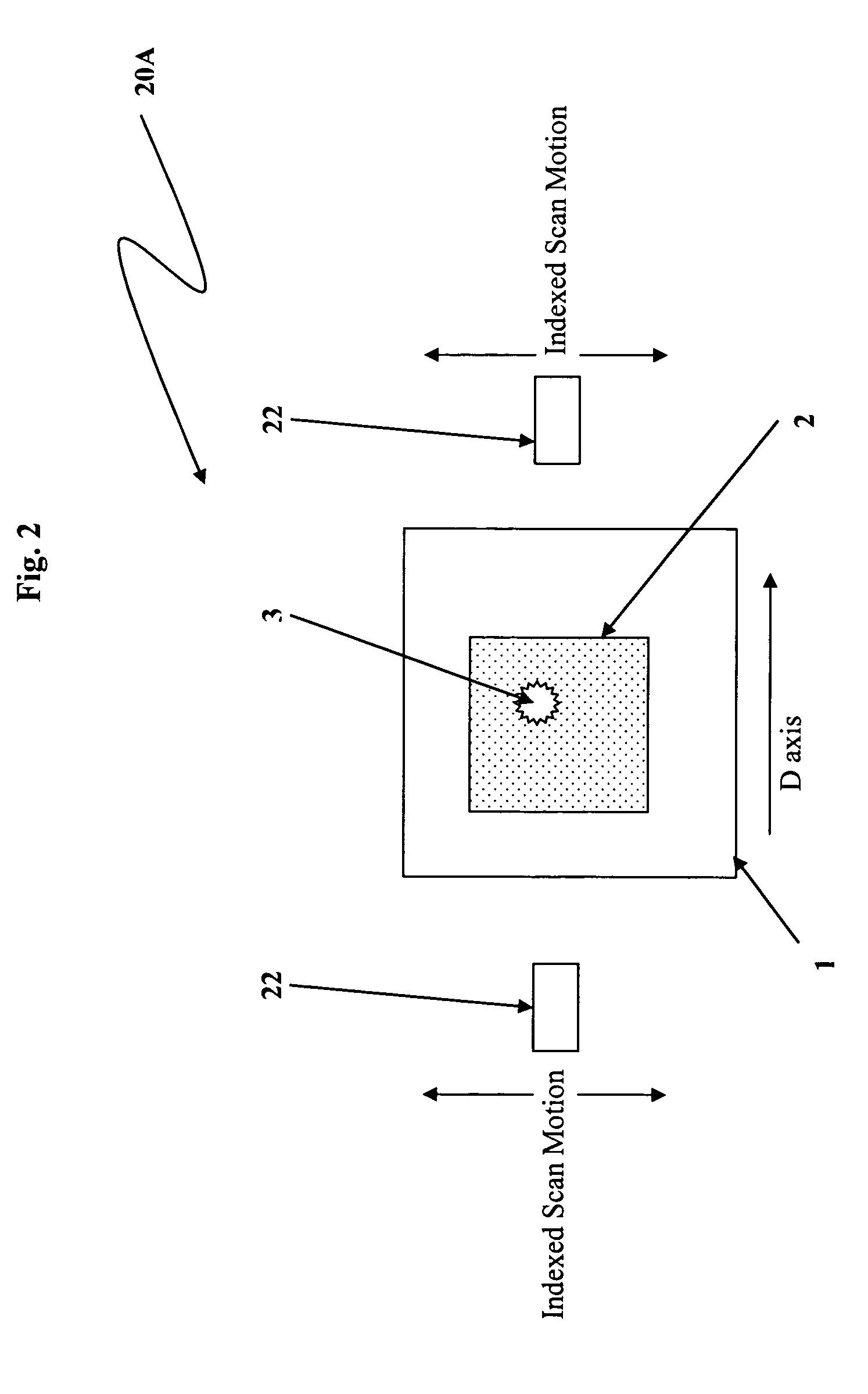Quantitative transmission/emission detector system and methods of detecting concealed radiation sources
a detector system and detector technology, applied in the field of efficient screening of concealed radiation sources, can solve the problems of imposing unsupportable burdens on commerce, disruption (and in some cases damage) of property, and inability to detect in time,
- Summary
- Abstract
- Description
- Claims
- Application Information
AI Technical Summary
Problems solved by technology
Method used
Image
Examples
Embodiment Construction
[0018]Referring now to various figures of the drawings wherein like reference characters refer to like parts, there is shown at 20 in FIG. 1, a quantitative transmission / emission detector system. As will be described in detail later, the quantitative transmission / emission detector system effects gamma-emission scans (which may be non-energy resolved or in a preferred embodiment, energy resolved) of containers 1, at a rapid rate based on the size of the containers being monitored and the size and sensitivity of the gamma detectors. The scan senses the gamma energy released from the spontaneous decay of nuclear material and can optionally characterize the isotopic content of these elements in the containers based on the energy of the gamma rays released. The determination of the isotope(s) present through energy-resolved gamma analysis is known in the art and, thus, will not be further elaborated here. The containers are then evaluated using transmission imaging to determine the atten...
PUM
 Login to View More
Login to View More Abstract
Description
Claims
Application Information
 Login to View More
Login to View More - R&D
- Intellectual Property
- Life Sciences
- Materials
- Tech Scout
- Unparalleled Data Quality
- Higher Quality Content
- 60% Fewer Hallucinations
Browse by: Latest US Patents, China's latest patents, Technical Efficacy Thesaurus, Application Domain, Technology Topic, Popular Technical Reports.
© 2025 PatSnap. All rights reserved.Legal|Privacy policy|Modern Slavery Act Transparency Statement|Sitemap|About US| Contact US: help@patsnap.com



